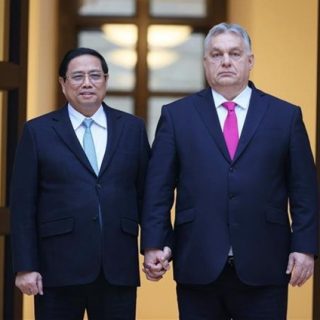China aims to prevent disputes in the South China Sea from becoming a multilateral issue, and seeks ways to solve tensions through bilateral negotiations. Beijing does not want an influential third party like Japan to enter the region.
With this consistent intention, China has used all resources, including economic power and diplomatic influence, to entice a number of ASEAN member states. According to analysts, “maintaining the status quo” will be detrimental and will force ASEAN countries that are in conflict with China in the South China Sea to make concessions, while giving the opportunity for Beijing to create “the past”, such as: reclaiming entities illegally occupied by this country, building runways, sending weapons and military equipment to artificial islands, harassing fishermen, harassing legal oil and gas exploitation of other countries. With overwhelming military size and strength, China will seek to gradually eliminate ASEAN countries to gain control most of the South China Sea.
On the Japanese side, this country always shows the viewpoint of maintaining peace, ensuring security, freedom of navigation and international law in the South China Sea. In 2016, Japanese Foreign Minister Fumio Kishida declared the PCA ruling on the Philippines lawsuit against China as final and legally binding. Tokyo also urged Beijing to accept and comply with the PCA’s ruling, avoiding actions that could escalate tensions in the South China Sea.

Japan’s battleship
Contrary to China’s strategy, Japan is working with the US to promote internationalization of the South China Sea issue. Japan also directly assists a number of countries that have disputes with China in the South China Sea by helping to increase maritime warning capabilities and coast guard.
Recently, Japan has increased its direct involvement and close coordination with the US, India and Australia in the South China Sea. In October 2020, the Japan Coast Guard conducted an anti-submarine exercise in the East Sea, and three participating ships stopped at Cam Ranh Bay of Vietnam for supplement logistics. Before that, Japan sent a helicopter carrier and a destroyer to participate in joint naval exercises with Indonesia in the western Natuna Islands. In August 2020, Japan protested against China’s launch of ballistic missiles into the South China Sea.
The situation in the South China Sea continues to be tense and will attract more and more influential countries to participate. This poses a great challenge for ASEAN in balancing relations with these parties, including Japan and China. However, this is also an opportunity for ASEAN to take advantage of its central role in an unpredictable world to effectively resolve regional issues, including the South China Sea disputes./.

Aufrufe: 195

 Deutsch
Deutsch Tiếng Việt
Tiếng Việt





